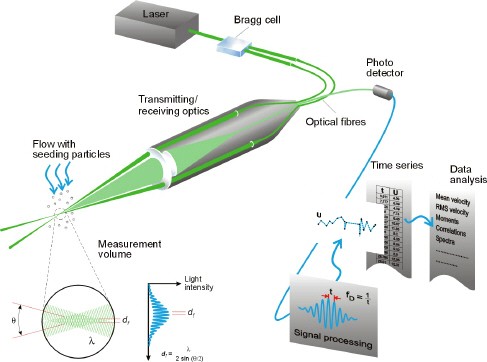Categories
Latest Blog
Application of Polarization-maintaining Fibers
The application of polarization-maintaining fibers is becoming more and more extensive. Taking advantage of the advantages of optical fiber, driven by the Internet of Things, there will be more meaningful applications.
(1) Interferometer
Applications for polarization-maintaining fibers include telecommunications, medicine, and sensors. A typical application is to use interference for measurement to ensure that the light propagating in the signal arm and reference arm of the interferometer is always recombined with the same polarization state, and the optical fiber is used to ensure optical constructive interference to prevent the ability of signal attenuation. If a conventional single-mode fiber were used, the polarization state of the light propagating in each arm would vary independently with time, resulting in a recombined signal between maximum and zero as the relative polarization states of the two
waveforms varied over 360 degrees decay.
In a word, the fundamentals of polarization-maintaining fiber unleash its capabilities for interferometers. Therefore, in the main application fields, it is related to interferometric measurement technology.。
Fiber Optical Gyroscope (FOG) is an interferometric fiber optic sensor that has achieved great commercial success. Essentially, a FOG is a rotational and rotational speed sensor that generally consists of three sensing rings of polarization-maintaining fibers, each corresponding to a desired degree of freedom (in aircraft terms: roll, pitch and yaw yaw).
The basic design of the FOG is a perfect illustration of the main benefit of using optical fibers as intrinsic optical sensing elements; optical fibers have the ability to guide and bend light, thus confining ultra-long optical paths into small physical volumes. These longer path lengths amplify relatively weak optical effects, allowing the fabrication of very compact, high-precision sensors. A typical FOG sensing ring consists of 200 to 5000 meters of PM fiber, depending on the required accuracy performance, which is now high enough to challenge the accuracy of laser gyroscopes (Boeing aircraft use laser gyroscopes)
(3)Integrated optics
Signal processing in interferometric sensors and transmission or detection in conventional and coherent communications use polarization-maintaining fibers. Another important technology is Integrated Optics (IO).
The pigtail of the PM fiber provides a stable polarization state and is aligned with the birefringence axis of the chip. The functionality of the device is based on the Pockels effect. When a voltage is applied to the electrodes, the refractive index of the substrate changes in proportion to the voltage. The resulting change in the effective optical path length can be used to generate interference, which, depending on the precise design of the titania-doped waveguide, can be manipulated to provide modulation of phase, frequency or amplitude, or even switch optical power between channels.
(4)Doppler Laser Anemometers and Velocimeters
In many cases, the function performed by polarization-maintaining fibers is to provide a flexible transmission system that enables the processing of weak optical signals. For example, Laser Doppler Anemometry (LDV) and Laser Doppler Anemometer (LDV, Velocimetry) are non-contact technologies for flow velocity measurement. This technique is applied to air flow in wind tunnels, and blood flow in veins and arteries, where flow velocity is determined by measuring the Doppler shift of light scattered from the fluid. To perform the measurement, the linearly polarized light from the laser source is split into two equal components and transmitted to the measurement location through two polarization-maintaining fibers of the same length.

(5) More application scenarios (EDFA pump combiner, reflection suppression scheme, current sensor and optical coherence tomography)
Long-range transmission of polarized light can be achieved using polarization-maintaining fibers, extending to various other applications throughout the industry. The evolution of telecom system architectures requires EDFAs to continuously increase power output, in some designs, through polarization multiplexing of 980 or 1480 nm pump diodes. Similarly, the pump diodes are also pigtailed in polarization-maintaining fibers to achieve a polarization-based scheme to suppress back reflections.
Among the sensors, the Faraday effect current sensing industry has also gradually developed. As polarization devices, current sensors rely on delivering a stable and known polarization state to the sensor head, and are typically implemented with polarization-maintaining fibers.
In medical terms, patients with coronary heart disease are called "chronic total occlusion" (CTO), that is, the blood vessels are completely blocked. Doctors are making a diagnosis with the aid of a special catheter or "guide wire" known as OCT.
OCT uses low coherence (broadband) light. Polarization-maintaining fibers also play an important role, enabling surgeons to distinguish the relationship between vessel wall and self-occlusion by optical coherence reflectometry (OCR), facilitating safe resection.
Previous :
Common Maintainence of Shinho fiber fusion splicerNext :
Fiber optic sensor© Copyright: SHINHO OPTICS LIMITED All Rights Reserved.